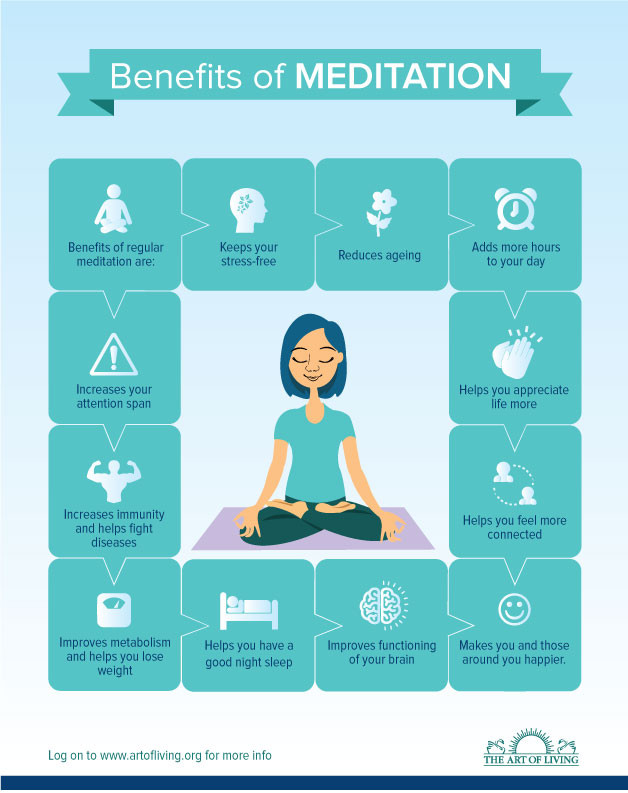
Meditation is one of many treatments for headaches. Meditation has been shown to reduce tension and promote relaxation. It can also be beneficial to people suffering from migraines or frequent headaches because it isolates the pain points. This meditation practice can reduce migraine severity and the frequency of headaches.
Meditation can be used to relieve headache pain, according to research. Meditation can reduce pain from headaches. It does this by clearing your mind of any negative thoughts and encouraging sustained focus. Many researchers found that meditation can reduce migraine-related disability as well as pain intensity. There are two types: mindfulness and kundalini. Both of these practices allow the individual to feel better by allowing him or her to let go of all his/her thoughts.

Meditation can be beneficial in relieving headache pain. However, people who have never done meditation before may find it challenging. This practice, among other things, requires you to meditate for long periods and then turn off all thoughts. Meditation can be difficult for those who don't know how to meditate. But there are many ways to get rid of the pain and suffering that migraines cause. It is possible to start practicing meditation once you understand the basics.
Research has shown that meditation may reduce migraine severity and duration. For instance, the Wake Forest Baptist Medical Center in North Carolina assigned 19 migraineurs to a stress-reduction program that included mindfulness meditation, yoga, and yoga. The participants had to complete 30 minutes of meditation each day. Although statistically not significant, participants experienced fewer headaches. For anyone suffering from chronic headaches, this may be a good option.
Meditation can reduce headache pain and offer many other benefits. Meditation can reduce stress and relax the body. It reduces migraine frequency and severity. It can also increase pain tolerance. One study saw 92 people being assigned to a mindfulness meditation program. The study subjects were taught to meditate for one hour each day. These results were visible in four weeks. The control group did not see any benefit.

Meditation for migraines may be able to reduce the severity and frequency of migraine attacks, according to another study. It increases heart rate variability and helps with cardiovascular health. To reduce migraines, those with chronic headaches should meditate for headaches. They will be able to live a happier life. It is also a great way to boost their mood. Meditating can help reduce migraine attacks and improve their overall health.
FAQ
Improve immunity with herbs and supplements?
To boost immunity function, herbs and natural remedies are available. There are many natural remedies that can boost immunity, including echinacea (oregano), ginger, ginkgo biloba and vitamin C.
These herbal remedies shouldn't be considered a replacement for medical treatment. These herbal remedies can cause nausea, vomiting, stomach cramps or dizziness.
Why is it important that we live a healthy and happy life?
A healthy lifestyle will help us live longer and happier lives. Good nutrition, exercise regularly, good sleep habits, stress management and healthy lifestyle can help you avoid heart disease and stroke.
Healthy lifestyles will help us to cope with daily stresses better and improve our mental health. Healthy lifestyles will increase self confidence, and make us look and feel older.
What are 10 healthy behaviors?
-
Get breakfast every morning.
-
Don't skip meals.
-
Keep a balanced diet.
-
Get plenty of water.
-
Take care to your body.
-
Get enough sleep.
-
Avoid junk foods.
-
Get at least one form of exercise each day.
-
Have fun!
-
Meet new people.
What is the difference among a virus or a bacterium and what are their differences?
A virus, a microscopic organism, is incapable of reproducing outside its host cell. A bacterium (or single-celled organism) reproduces by splitting itself into two. Viruses measure only 20 nanometers in diameter, but bacteria is up to 1 millimeter in size.
Viruses are spread via contact with infected bodily liquids such as urine, saliva, semen and vaginal secretions. Bacteria are often spread via direct contact with contaminated surfaces or objects.
Viral infections can also be introduced to our bodies by a variety of cuts, scrapes or bites. They can also enter the body through the mouth, nose, eyes and ears, vaginal, rectum or anus.
Bacteria can enter the body through wounds. They can also be introduced to our bodies by food, water and soil.
Both bacteria and viruses can cause illness. However, viruses cannot reproduce within their hosts. So they only cause illnesses when they infect living cells.
Bacteria can cause illness by multiplying in the body. They can also invade other parts of your body. Antibiotics are needed to eliminate them.
What is the healthiest lifestyle to life?
Healthy lifestyles include eating healthy food, regular exercise, good sleep, and avoiding stress. These are the keys to a healthy and long-lasting life.
Small changes to your diet or exercise routine can help you start losing weight. Try walking for 30 minutes each day to lose weight. If you're looking for a way to increase your activity, consider taking up swimming or dancing. An online fitness program such as Strava or Fitbit that tracks your activity could be a good option.
Statistics
- This article received 11 testimonials and 86% of readers who voted found it helpful, earning it our reader-approved status. (wikihow.com)
- In both adults and children, the intake of free sugars should be reduced to less than 10% of total energy intake. (who.int)
- According to the 2020 Dietary Guidelines for Americans, a balanced diet high in fruits and vegetables, lean protein, low-fat dairy and whole grains is needed for optimal energy. (mayoclinichealthsystem.org)
- The Dietary Guidelines for Americans recommend keeping added sugar intake below 10% of your daily calorie intake, while the World Health Organization recommends slashing added sugars to 5% or less of your daily calories for optimal health (59Trusted (healthline.com)
External Links
How To
27 Steps to a Healthy Lifestyle when Your Family Buys Junk Food
The best way to eat healthily is to cook at your home. This is difficult for people who don't know how to cook healthy meals. This article will provide some helpful tips for making healthier dining out choices.
-
Find restaurants that offer healthy options.
-
Before ordering any meat dishes, order vegetables and salads.
-
Ask for sauces without added sugar.
-
Avoid fried items.
-
Instead of ordering fried meats, request grilled meats.
-
Order dessert only if you absolutely need it.
-
After dinner, make sure you have something to eat.
-
Slowly chew and eat.
-
Get plenty of water when you eat.
-
Breakfast and lunch should not be skipped.
-
Fruits and vegetables are a great addition to every meal.
-
Use milk, not soda.
-
Sugary drinks are best avoided.
-
Limit salt in your diet
-
You should limit how often you visit fast food restaurants.
-
Ask someone to join you if you cannot resist temptation.
-
Don't let your children watch too much TV.
-
When you are eating, keep the television off.
-
Do not drink energy drinks.
-
Take regular breaks from work.
-
Get up early in the morning and exercise.
-
Get active every day.
-
Start small and progress slowly.
-
Set realistic goals.
-
Be patient.
-
You can exercise even when you don't feel like doing it.
-
Positive thinking is important.